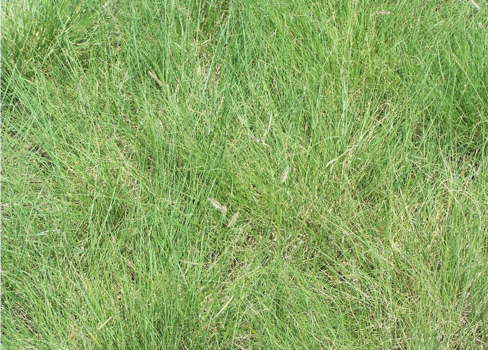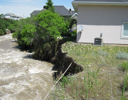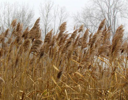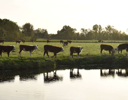Rethink Your Lawn
One of the best improvements you can make to protect water quality and improve habitat is to reduce your total area of lawn, especially if it extends into the riparian zone.
In our arid climate a typical Kentucky bluegrass lawn requires a whole lot of water (and fertilizer, and other lawn care chemicals) to stay green and healthy throughout the growing season. A 1,000 square foot lawn (0.02 acres) needs approximately 15,000 gallons of water per year to keep it green! And that’s a conservative estimate. Cool-season bluegrasses have shallow root systems that are not very effective at using and absorbing water. In comparison, the deep roots of native plants utilize water much more effectively, which saves water and decreases runoff.
From a habitat perspective, a typical bluegrass lawn offers very little in terms of shelter, cover, or food. Reduce your total area of lawn and try replacing thirsty bluegrasses with drought tolerant native turf grasses such as Blue grama grass (Bouteloua gracilis) or Buffalo grass (Buchloe dactyloides). Blue grama requires about 70% less water than Kentucky bluegrass! The native turf grasses can be left unmowed to create a low meadow that complements natural plantings and creates more structual diversity. They can also be mowed if you prefer a more manicured look. You can save money, save time, and protect the environment with a sustainable lawn.
Regardless of what type of grass you have, the following tips will help you conserve water and create a healthier landscape:
- Mow high: Longer grass means deeper roots, hardier plants, and a reduced need for water. Keep lawn at a minimum of 3 inches.
- Water deeply: Reduce the number of times you water and water more deeply each time to encourage robust rooting.
Learn more about sustainable landscapes below:










